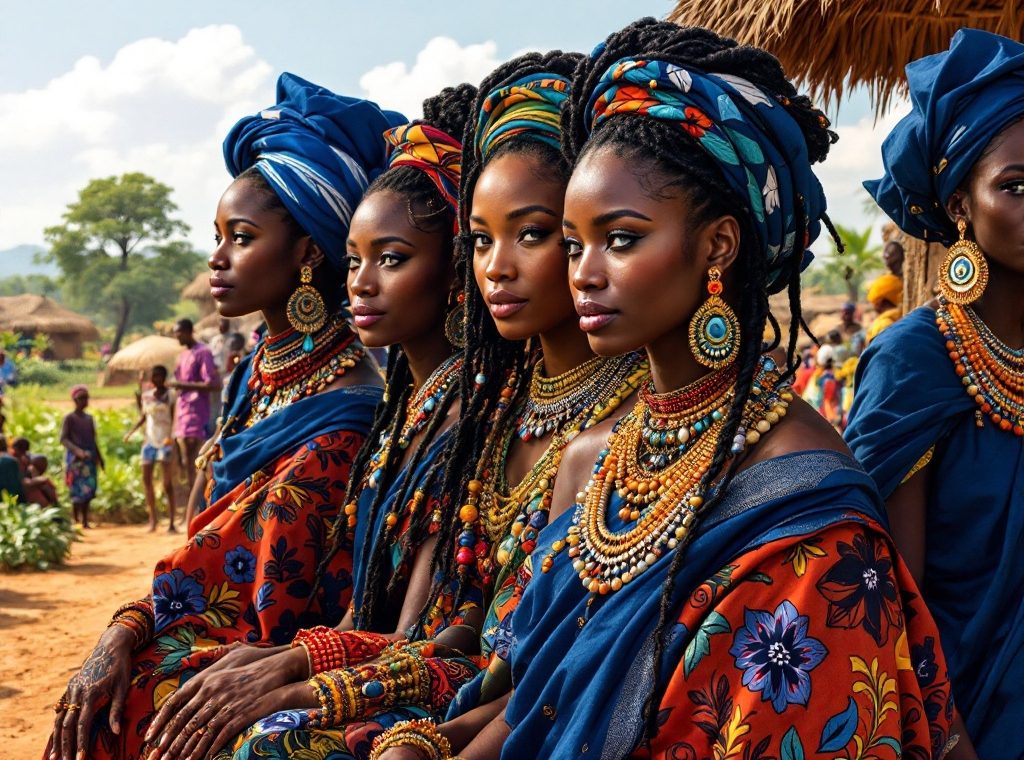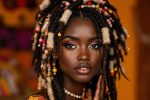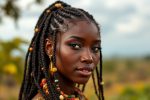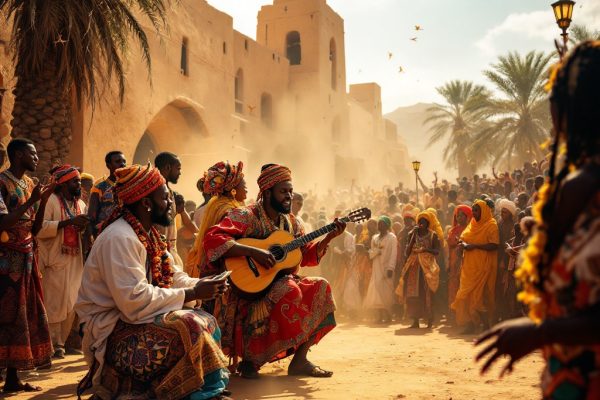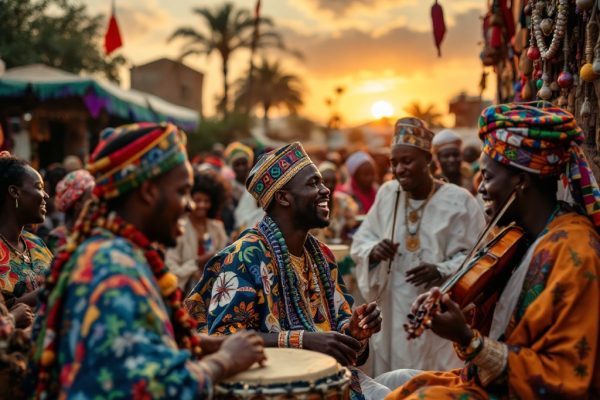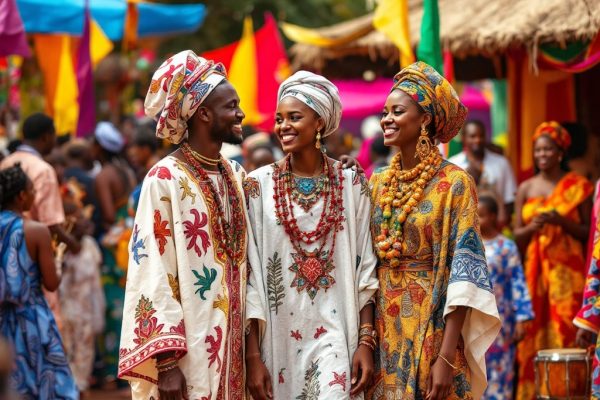The Beauty and Strength of Fulani Women: Traditions, Fashion, and Culture
Discover the vibrant world of Fulani women, the heart of their communities. From their significant economic contributions through agriculture and trade to their vital role in preserving rich cultural traditions, Fulani women are truly remarkable. Explore their stunning attire, intricate hairstyles, and the significance of Mudukare and beads in their culture. Learn how henna and indigo symbolize elegance and how their distinctive braids blend tradition with modern fashion. Delve into the fascinating world of Fulani women and appreciate their enduring strength and cultural impact.
Important information
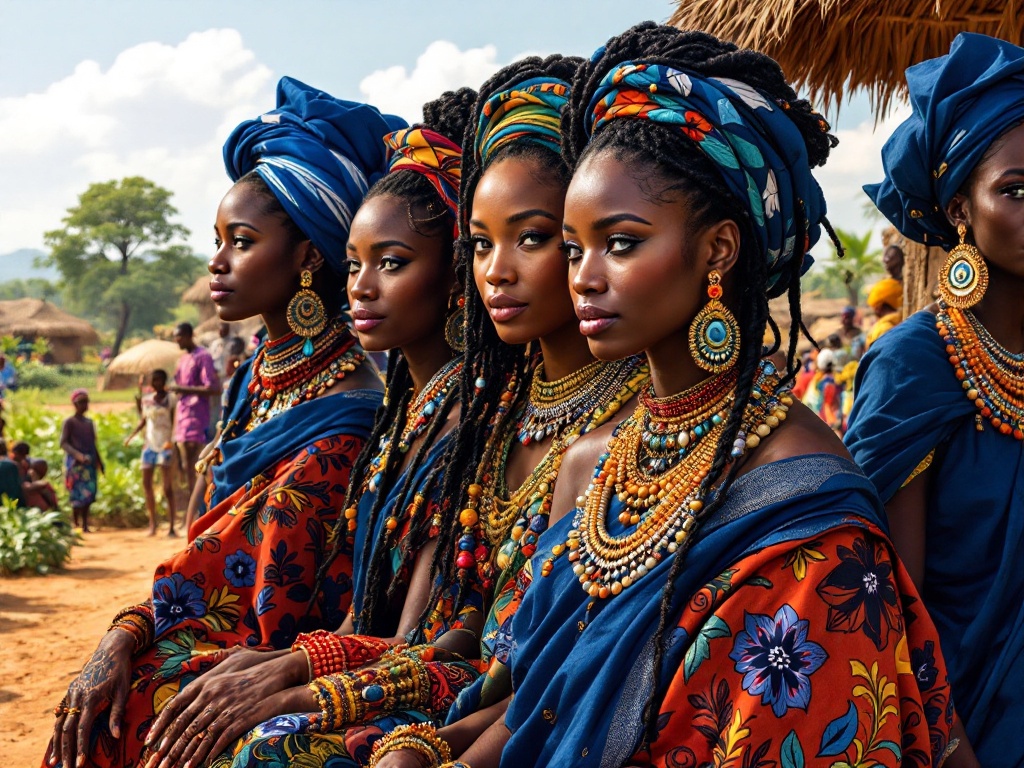
- Fulani women are central to their community’s well-being, actively participating in family life, economic activities, and cultural preservation.
- They contribute significantly to the local economy through trade, primarily of dairy products, which supports their families and strengthens community bonds.
- Fulani women are key to preserving their cultural heritage, transmitting traditions, stories, and values to younger generations.
- Their distinctive clothing, hairstyles (often adorned with beads and braids), and use of Mudukare (a cosmetic paste) and elaborate beadwork are important expressions of their cultural identity and social status.
- Henna and indigo are significant in Fulani culture, used in beauty rituals and for adornment, particularly during festivals and celebrations, symbolizing elegance and cultural pride.
The Role of Fulani Women in Their Communities
Fulani women are the backbone of their communities, nurturing family life and preserving their rich cultural heritage. Their contributions to the economy are significant, particularly through agriculture and livestock management. These women also play a vital role in transmitting traditions and values, ensuring the survival of Fulani culture for generations to come.
Strong Pillars of Community Life
Fulani women are essential to their communities, deeply involved in family life and economic activities. They play a crucial role in preserving their rich cultural heritage, strengthening community bonds, and ensuring traditions are passed down through generations. Their significant influence contributes to the well-being and stability of Fulani society.
Economic Contributions through Trade
Fulani women play a vital role in their local economies. They actively trade dairy products, such as milk, butter, and cheese, for grains, vegetables, and other essential goods. This trade is crucial for providing sustenance for their families and boosting their communities’ economic stability. It also strengthens community bonds by fostering interdependence. Ultimately, these women’s trading activities are fundamental to the overall well-being of their communities.
Preserving Cultural Identity and Heritage
Fulani women play a crucial role in preserving their vibrant culture. They actively transmit traditions and stories to younger generations, safeguarding their heritage. Their distinctive clothing and hairstyles serve as a visual link to their rich history, reinforcing their cultural identity. They are known for their elaborate hairstyles, which often incorporate beads and braids, and their colorful clothing, which is typically adorned with intricate embroidery. These visual expressions of their culture not only beautify the women but also communicate their social status and affiliations within the community. The Fulani women’s dedication to upholding their traditions ensures the continuity of their cultural legacy for generations to come.
The Aesthetic Appeal of Fulani Fashion
Fulani attire is renowned for its vibrant robes and intricate embroidery, often showcasing colorful patterns and symbolic motifs. The flowing boubou robes worn by Fulani women are a striking example. Their vibrant hues and elaborate designs reflect a rich cultural heritage. Crafted from materials like cotton and silk, these garments are often adorned with cowrie shells, beads, and metalwork.
Fulani men also wear distinctive clothing, including flowing robes and hats that signify their social status. This attire is a powerful expression of cultural identity and pride, with the craftsmanship involved passed down through generations.
The Fulani people place great importance on Mudukare, a reddish-brown paste made from ground potash and herbs. Applied to the face and body, Mudukare acts as both a cosmetic and sunscreen.
Highly valued beads are incorporated into elaborate necklaces, earrings, bracelets, and anklets worn by women, often symbolizing wealth, status, and beauty. The colors and patterns of these beads hold cultural significance and are frequently given as gifts, passed down through families as a tangible link to their heritage. Both Mudukare and beads reflect a deep connection to Fulani traditions and aesthetic values.
Traditional Fulani Attire: Vibrant Robes and Intricate Details
Fulani women are known for their stunning attire, often seen in long, flowing robes of vibrant colors. These garments, sometimes subtly embroidered or embellished, showcase the intricate artistry and cultural identity of the Fulani people. Jewelry and other adornments also play a significant role, adding another layer to their expression of heritage. A prime example of Fulani clothing is the boubou, a robe often decorated with elaborate and colorful embroidery.
Significance of Mudukare and Beads in Fulani Culture
Fulani women showcase their heritage through the Mudukare, a traditional garment worn during cultural dances. They also adorn themselves with vibrant beads on their hands, heads, and waists, symbolizing their cultural pride. These elements are essential components of their celebratory attire.
Fulani Beauty Rituals and Practices
Fulani beauty rituals are deeply intertwined with their cultural identity. Henna and indigo are essential, adorning skin and dyeing hair, symbolizing elegance and cultural pride. Intricate tribal braids, often decorated with beads and other ornaments, represent a blend of tradition and modern style. Passed down through generations, henna adornment signifies beauty, heritage, and important life events, even marking social status within the community. These practices empower Fulani women with self-expression and cultural preservation, forming a vibrant part of Fulani life.
Henna and Indigo: Cultural Symbols of Elegance
Fulani women celebrate their cultural heritage through the beautiful artistry of henna and indigo. Henna, a reddish-brown dye, creates elaborate designs, often adorning hands and feet during festivals such as Eid el Fitr. This symbolizes joy and celebration within their community. The application of henna is a communal activity, strengthening bonds between women. Indigo, a rich blue dye, complements the henna. It creates a vibrant contrast and adds another dimension to the artistic expression. Together, these natural dyes represent elegance and reinforce cultural identity within the Fulani tradition. These practices are more than mere adornment; they are a powerful statement of heritage.
Fulani Tribal Braids: A Fusion of Tradition and Fashion
Fulani braids are more than a hairstyle; they represent a rich cultural heritage and serve as a powerful symbol of Fulani identity. Passed down through generations, these intricate braids tell a story. They are often adorned with beads and other embellishments, which are not merely decorative; they signify social status and mark important life events, such as marital status. While maintaining their cultural significance, Fulani braids have become a fashionable global trend, showcasing their beauty and versatility. However, it’s crucial to appreciate the cultural context and respect the traditions associated with these striking braids.
Adornment with Henna: A Symbol of Beauty and Tradition
Henna plays a vital role in Fulani culture, especially during Eid el Fitr. For Fulani women, it embodies beauty and tradition, adorning their hands and feet with elaborate designs. This shared artistic practice strengthens community ties, allowing women to showcase their creativity and reaffirm their cultural identity. Henna is more than just a decoration; it’s a potent symbol of cultural pride.

